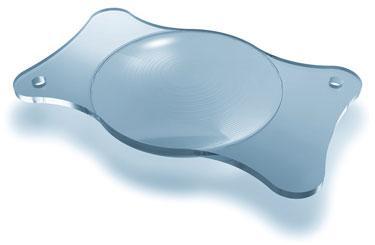

Lack of vision becomes more noticeable with age. Conditions such as myopia and hyperopia (also known as short and long sightedness respectively), astigmatism or presbyopia are some of the most common eye conditions that eye care practitioners are trying to solve or to look more advanced solutions for.

However in the last years, many vision technology researchers have taken a step forward in eye surgery treatments, recommending the use of a more advanced model of intraocular lens. An implant that allows corrections for most eye conditions derived from cataract with surgery, including those caused by normal aging.
Trifocal intraocular lens
The trifocal intraocular lens has meant a huge advanced in the ophthalmic field that has contributed to improve patients’ life quality, especially those people over 50 that, thanks to this new lens, can go on doing any kind of activity without the need to wear glasses or lenses.

In this sense, the intraocular lens is a good alternative for people who have developed a cataract, saving them having to wear prescription glasses with prescriptions that will range up to + or – 3.00 D. And that is also the case for people who have short-arm disease plus short or long sightedness or astigmatism, who may have surgery with this technique and correct all vision conditions all in a single procedure.
Until now corrective eye surgery used bifocal lenses that only offered clear distance and near vision, that is, correction for near-sightedness or farsightedness. But with the inclusion of the new trifocal intraocular lenses’ technology, now it’s possible to give patients clear intermediate vision as well as distance and near vision. An example is the distance between our eyes and the computer screen, a vision problem that’s affecting more and more people nowadays.
Also the new trifocal intraocular lenses make it possible to minimize the optical phenomena related to night vision (glare and haloes) that, in some cases, are perceived by patients after having eye surgery.

